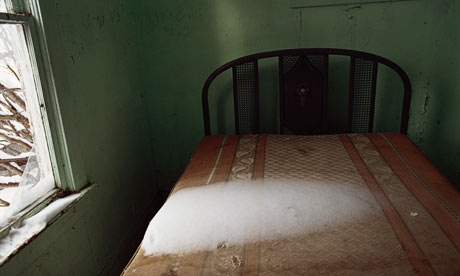It is one thing to photograph a group of people, it is another to try to understand them. For that you need time, and patience, and an innate respect for difference – the gulf between your own religion, politics, economic status, language, and those of the person in front of you. Trying to bridge that gulf with a camera invites suspicion and mis-representation. But at a time when traditional photographic coverage is often limited to a brief stopover and a search for sensational images, the need to take time and represent and understand the people whose lives and values are very different from our own is greater than ever.

To travel, and to observe carefully and with sympathy the people whose lands he travels through, has been Fazal Sheikh’s practice from the beginning. Most often his work has been with displaced people driven out of their homelands by civil wars, drought and famine, struggling to survivefor years in refugee camps where the traditional balance of their lives has been entirely destroyed. He has worked in camps in Kenya, Malawi and Tanzania, where people fleeing conflicts in Sudan, Ethiopia, Somalia, Mozambique and Rwanda were gathered. In the mid-1990s he found Afghan refugees living in camps, who had fled after the Soviet invasion of their country. At the end of that decade he returned to the camps in Kenya where Somali refugees had been living for a decade. He found children he had photographed ten years before, now grown into adolescents, who knew nothing but life in the camps. Since then he has worked in Mexico, Cuba, Brazil and, most recently India, where his latest book, Moksha, examines the lives of India’s dispossessed widows.
In all these communities, the photographs that result are not dramatic nor do they attempt to shock. They are contemplative and respectful:the product of a watchful intelligence. Fazal Sheikh not only makes pictures, he interviews the people he photographs about their lives, transcripts of which appear in his books and exhibitions, to which he adds his own commentary on the people, their country, and the situation in which he finds them.
In 2000, so that this work might be more freely available, he established the International Human Rights Series, which, in collaboration with international galleries, institutions and human rights organizations, uses publications, exhibitions and the Internet to reach a much wider audience.
Źródło: http://www.fazalsheikh.org/
Na oficjalnej stronie fotografa można obejrzeć cyfrowe edycje albumów fotografa:
http://www.fazalsheikh.org/
Album "Fazal Sheikh: Moksha" dostępny jest w naszej księgarni:
http://www.bookoff.pl/product-pol-1592-Fazal-Sheikh-Moksha.html
Cyfrowa edycja albumu "Fazal Sheikh: Moksha" dostępna jest na poniższej stronie:
http://www.fazalsheikh.org/10_moksha/online_edition_en/start.php










